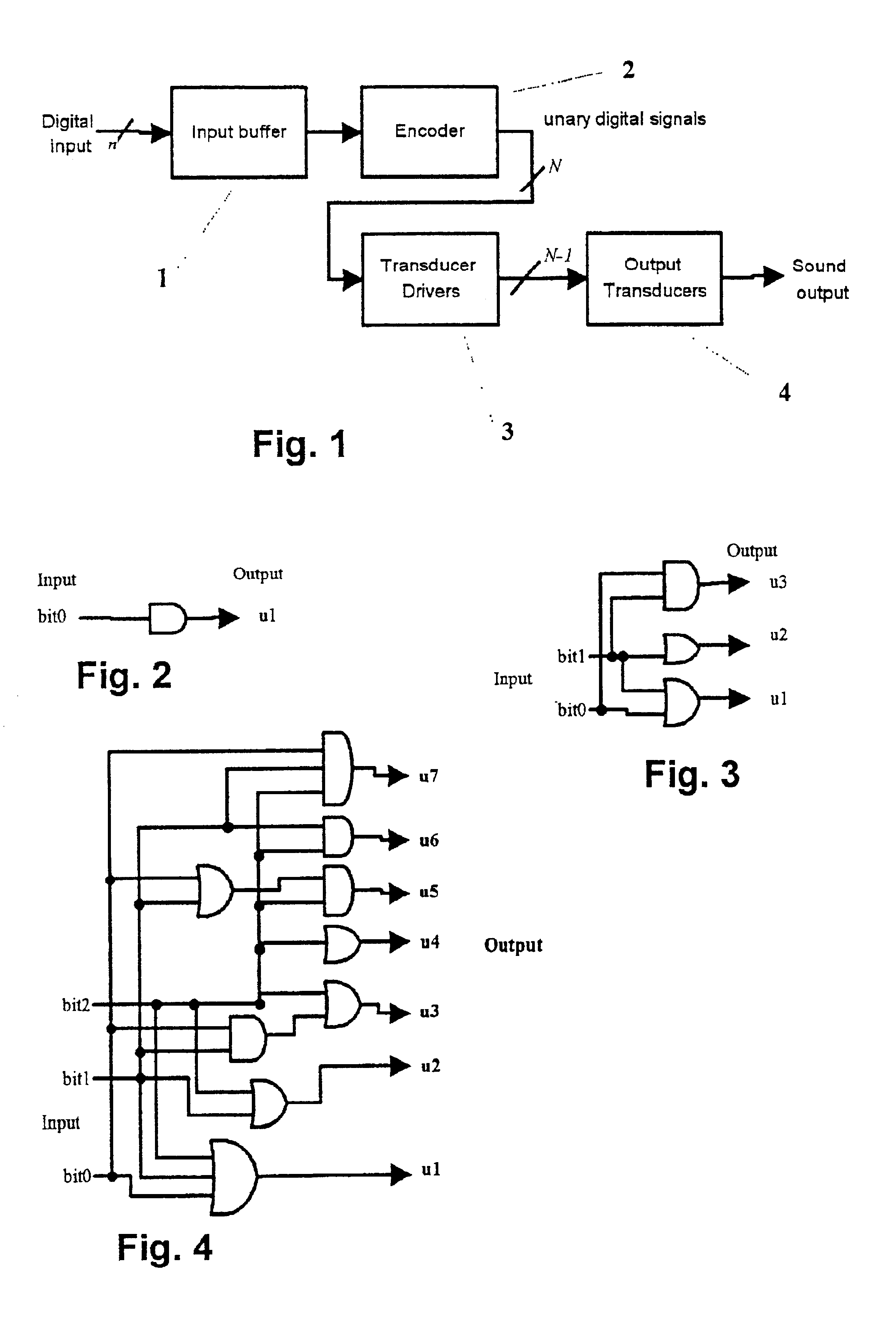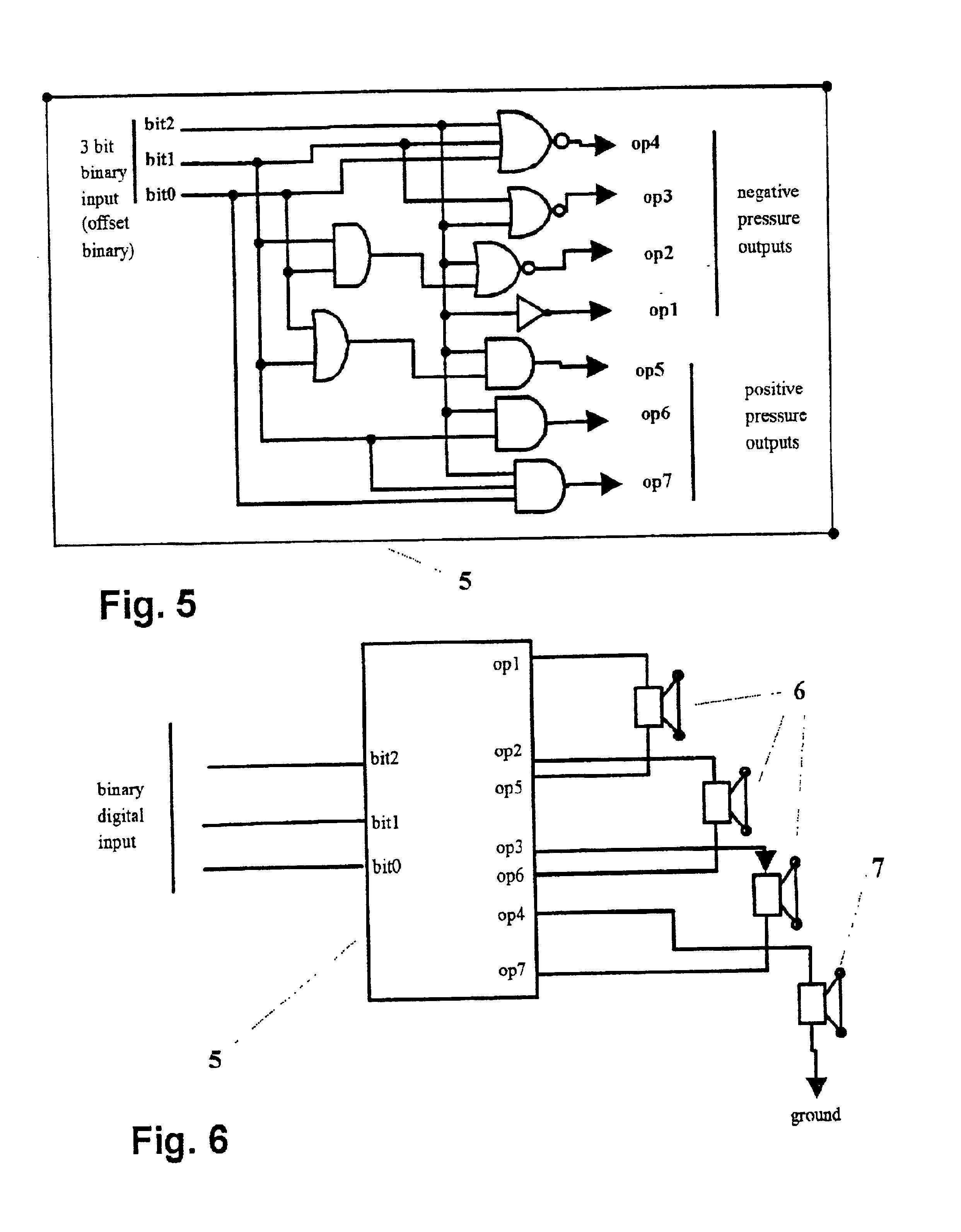Digital pulse-width-modulation generator
a generator and digital technology, applied in the field of digital pulse width modulation generators, can solve the problems of linearity, efficiency, linearity and efficiency of power available, diaphragm mass, etc., and achieve the effects of reducing cost and manufacturing complexity, and reducing the number of individual transducers
- Summary
- Abstract
- Description
- Claims
- Application Information
AI Technical Summary
Benefits of technology
Problems solved by technology
Method used
Image
Examples
Embodiment Construction
[0100]FIG. 1 illustrates a digital loudspeaker in which the present invention may be applied. A digital input signal of some kind representing a sound pressure waveform is received by the apparatus at the input buffer 1 on n input signal paths. This digital signal may be in any digital code form (e.g. binary code, decimal code, in serial or parallel format). For the purposes of explanation only we assume a binary code input signal of n bits, where one of the bits is a sign bit indicating the polarity of the input signal though the invention is not in any way limited to this input format. The input buffer 1 presents a uniform impedance to the input signal(s) and performs any necessary level conversion and / or serial to parallel conversion before presenting the n parallel binary bits to the encoder 2. The encoder 2 encodes the n bit binary input code into N unary signals, one of which is a unary sign or polarity signal indicating whether the remaining N−1 unary signals represent a posi...
PUM
 Login to View More
Login to View More Abstract
Description
Claims
Application Information
 Login to View More
Login to View More - R&D
- Intellectual Property
- Life Sciences
- Materials
- Tech Scout
- Unparalleled Data Quality
- Higher Quality Content
- 60% Fewer Hallucinations
Browse by: Latest US Patents, China's latest patents, Technical Efficacy Thesaurus, Application Domain, Technology Topic, Popular Technical Reports.
© 2025 PatSnap. All rights reserved.Legal|Privacy policy|Modern Slavery Act Transparency Statement|Sitemap|About US| Contact US: help@patsnap.com



